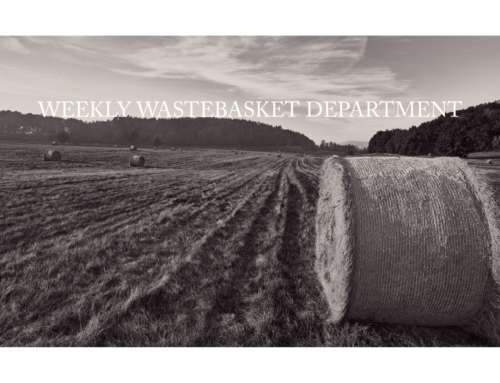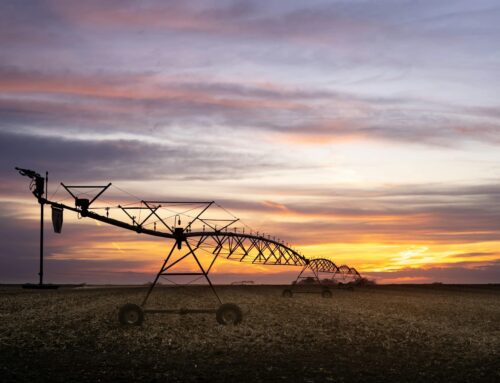View/Download this article in PDF format.
(Originally published June 8, 2012)
With debate on the 2012 Farm Bill underway on the Senate Floor, proponents of this nearly trillion dollar bill are touting it as a bipartisan achievement toward deficit reduction. Rather than a paragon of a new era of cooperation in tackling our massive debt, this bill is a prime example of business-as-usual parochial politics for Washington.
The 2012 Farm Bill is Much Larger than the Last Farm Bill
The 2008 Farm Bill was projected to cost $604 billion over 10 years (FY2008-FY2017) when it was signed into law.
Current Congressional Budget Office (CBO) estimates of the Senate Agriculture Committee-passed Farm Bill project total mandatory spending of $969 billion.
Just doing the simple math, the Senate Agriculture Committee Farm Bill will cost 60% more than its predecessor.
| 2008 Farm Bill Projected Spending | $604 Billion |
| 2012 Senate Ag Committee Farm Bill | $969 Billion |
| Increase | 60% |
In Agriculture More is Less
The Committee-passed Farm Bill squanders a golden opportunity to save billions from the long overdue elimination of direct payments. CBO projects $50 billion in savings from the bill’s elimination of the misguided and unnecessary ACRE, direct payments, and counter-cyclical programs. But this bill plows the bulk of these savings into new entitlements that put taxpayers on the hook for modest dips in Agricultural businesses’ expected revenue. The alphabet soup of “shallow loss” programs ARC, STAX, and SCO are projected to cost $35 billion over 10 years. So instead of “spending” $50 billion on deficit reduction, the Committee chose to “spend” $35 billion on new and unnecessary entitlement programs.
| Cost of STAX, ARC, SCO entitlement programs without Senate bill | $0 |
| Cost of STAX, ARC, SCO entitlement programs with Senate bill | $35 billion |
| Increase | $35 Billion in New Entitlements |
CBO’s Crystal Ball isn’t Perfect
CBO was wrong last time and easily could be again. And unfortunately, when they miss it often ends up costing a lot more.
The 2008 Farm Bill was projected to cost $284 billion from FY2008-FY2012 and $604 billion over 10 years (FY2008-FY2017). Reality is more sobering. Crop insurance alone is now projected to cost $14 billion more in the 10-year window; an increase of nearly 20%.
Continued high commodity prices will see the shallow loss programs locking in atypically high prices that put taxpayers on the hook for guaranteeing significant revenue for agricultural businesses. When prices dip – even just a little – taxpayers could be out billions more than CBO estimates.
Crop Insurance Needs to be Reined in Not Showered with Subsidies
The bill does nothing to reduce the costs of the largest taxpayer subsidy to agricultural businesses: crop insurance. In fact it takes a program that was already expected to cost $90 billion and increases the cost to $95 billion. There are billions more in savings ripe for the picking. And these can be done with most agricultural businesses not even noticing.
Crop insurance is already an overly generous taxpayer guarantee of business revenue. Taxpayers heavily subsidize individual businesses to buy crop insurance. 100% of the premiums for basic, catastrophic coverage are covered by taxpayers, with additional subsidies if businesses choose to increase their coverage level. Overall, around 62% of the premiums for crop insurance are paid for by taxpayers.
Taxpayers also reimburse companies for the costs of administering crop insurance. But the prices are based on the amount of insurance coverage provided not the actual cost of delivery. This needs to be reduced.
This bill does nothing to change these subsidies. In fact it layers new shallow loss programs on top of subsidized crop insurance with taxpayers footing most of the bill. SCO-70% subsidized, STAX-80% subsidized, ARC-100% subsidized.
| Taxpayer Costs for Crop Insurance without Senate bill | $90 billion |
| Taxpayer Costs for Crop Insurance with Senate bill | $95 billion |
| Increase | $5 Billion |
The Senate bill is not a step forward. It is a costly shift to having taxpayers play an even greater role in the business decisions of agricultural businesses.
For more information, contact Joshua Sewell at 202-546-8500 x116, or josh [at] taxpayer.net.














Get Social